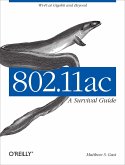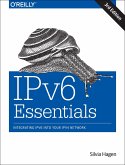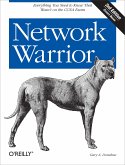Wireless has finally come of age. With a significant jump in throughput over previous standards, 802.11n is the first wireless technology that doesn't trade speed for mobility, and users have stormed onto wireless networks with a passion. In this concise guide, Matthew Gast - chair of the IEEE group that produced revision 802.11-2012 - shows you why wireless has become the default method of connecting to a network, and provides technical details you need to plan, design, and deploy 802.11n today.
Building a network for the multitude of new devices is now a strategic decision for network engineers everywhere. This book gives you an in-depth look at key parts of 802.11n, and shows you how to achieve an Ethernet-free wireless office. Learn how MIMO's multiple data streams greatly increase wireless speed Discover how 802.11n modifications improve MAC efficiency Examine advanced PHY features such as beanforming and space-time code block Use advanced MAC features to maintain interoperability with older devices Plan an 802.11n network by determining traffic demand, key applications, power requirements, and security Choose the architecture, select hardware, and plan coverage to design and build your network
Hinweis: Dieser Artikel kann nur an eine deutsche Lieferadresse ausgeliefert werden.
Building a network for the multitude of new devices is now a strategic decision for network engineers everywhere. This book gives you an in-depth look at key parts of 802.11n, and shows you how to achieve an Ethernet-free wireless office. Learn how MIMO's multiple data streams greatly increase wireless speed Discover how 802.11n modifications improve MAC efficiency Examine advanced PHY features such as beanforming and space-time code block Use advanced MAC features to maintain interoperability with older devices Plan an 802.11n network by determining traffic demand, key applications, power requirements, and security Choose the architecture, select hardware, and plan coverage to design and build your network
Hinweis: Dieser Artikel kann nur an eine deutsche Lieferadresse ausgeliefert werden.








